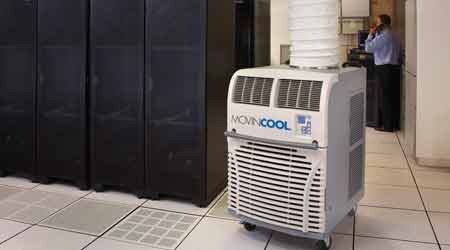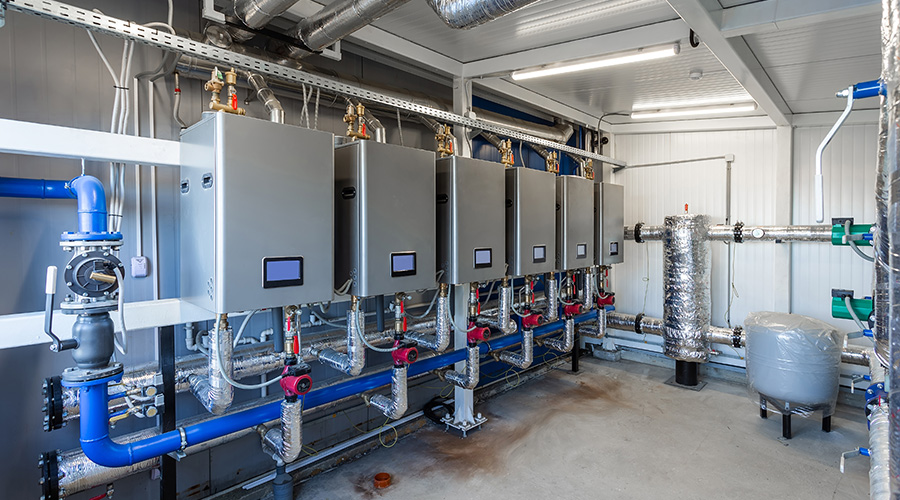 Managers can purchase or rent relativly low-cost temporary colling systems ranging from small, self-comtained units to cool one area, to trailer-mounted units that can cool entire buildings.
Managers can purchase or rent relativly low-cost temporary colling systems ranging from small, self-comtained units to cool one area, to trailer-mounted units that can cool entire buildings.HVAC: Determing Temporary Cooling Loads
There are three rules of thumb managers can choose from to help determine the cooling loads needed for temporary cooling.
Part two of a four part series.
The lowdown on loads
Managers can choose from three methods to determine the appropriate size of the temporary unit to meet the facility’s cooling load: rule of thumb, ton-for-ton replacement, and heat-load calculations.
Rule of thumb. Rules of thumb have be used for decades when sizing HVAC systems. Sometimes they are successful and fairly accurate, but sometimes they are not. Managers use them because they are quick and easy. The most common rules of thumb for temporary cooling are based on the area of the space served.
For example, one commonly used rule of thumb for general office areas is that the cooling load is 200-300 square feet of floor area per ton of cooling. For data centers, the cooling load is 150-300 square feet per ton of cooling. Retail areas are in the range of 250-400 square feet per ton.
These numbers are for a typical application, and managers will have to consider such factors as climate, the amount of glass in exterior walls, the lighting system, the kind of heat-producing equipment present in the space, and space occupancy.
Rules of thumb are best used in emergency situations when a unit has failed and the facility needs a temporary unit immediately. They can be fairly accurate, but they can also seriously underestimate or overestimate the temporary cooling requirements.
Ton-for-ton sizing. Another quick and dirty estimating technique for sizing a temporary cooling system is to size the tonnage of the temporary system equal to the tonnage of the system it is replacing. For example, if the existing system provides 40 tons of cooling capacity, the temporary system also would need to provide 40 tons. This method requires no calculations as long as the existing system adequately cooled the space. If so, the temporary system most likely will perform satisfactorily.
Ton-for-ton sizing usually works. Where it runs into trouble is in applications where the cooling loads in the space have either increased or decreased. Small changes are not a problem, but large ones are.
If the cooling load has increased sufficiently, managers might not be aware that the existing system was not properly cooling all areas within the space. If the load has decreased significantly, the temporary system will be oversized, and control and dehumidification issues will result. Remember, one of the reasons the existing system is being replaced might be that it is oversized or undersized.
Ton-for-ton sizing for temporary cooling systems also is best used in emergency situations where there is not sufficient time to calculate cooling loads, or in applications where the cooling loads are simple and straightforward.
Load calculations. The most accurate and most difficult method of determining the size of the temporary cooling system is cooling load calculation. Calculations are typically performed by an engineer that take into account the volume of the space being cooled, the climate where the facility is located, the construction of the building, the solar load on the conditioned space, how much fresh air is being introduced into the space, how many people will be occupying the space, and what type of heat producing loads are present.
Load calculations cannot be left until the last minute. The area will have to be surveyed and detailed information recorded on the space and the activities being performed there. Calculation will then be made to determine the required size of the temporary system. All of that takes time and money. In spite of that, the load calculations method will give managers the most accurate estimate of the capacity for the temporary cooling system.
Related Topics:















